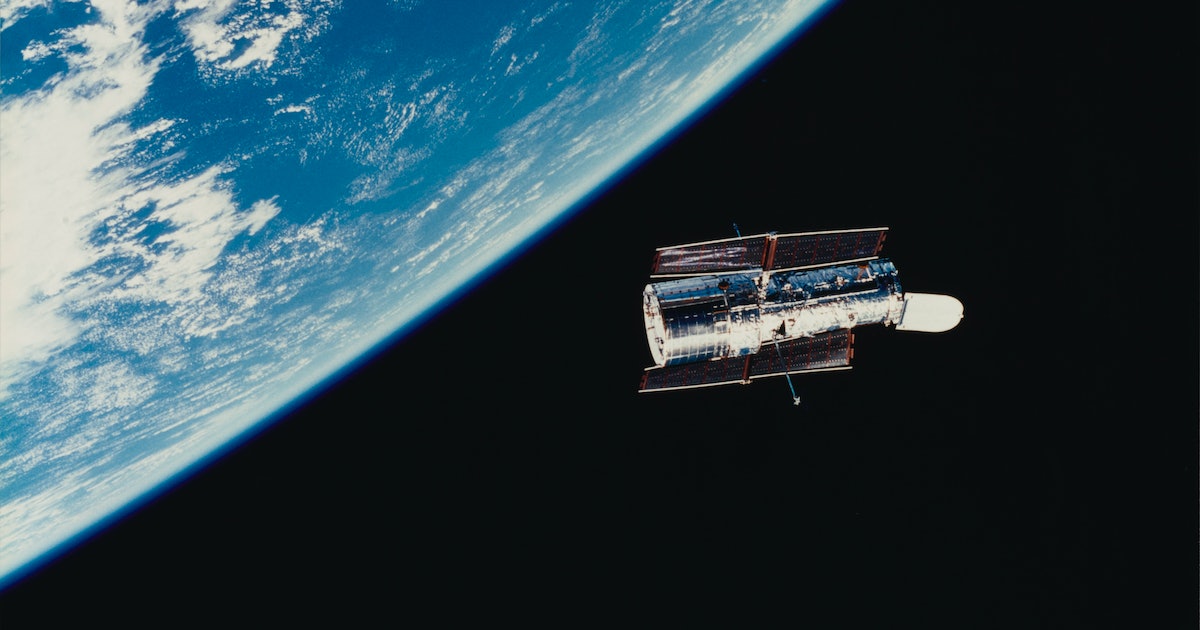
Haunting new Hubble galaxy cluster image puts dark matter front and center
A spider’s spindles are often invisible. On Thursday, the European Space Agency drew on the allegory to describe a Hubble Space Telescope image, and why the galaxy cluster Abell 611 confuses astronomers.
There’s something unseen in this new image. And it’s potent, capable of warping light and creating a gravitational lens that stretches the appearance of several galaxies just left of center. Astronomers currently estimate that 85 percent of the matter in the Universe is made of dark matter. This invisible substance may be behind Abell 611’s visible oddities.
To humans, most things in space are huge. But size has scales, and Abell 611 far exceeds the size of, say, the Solar System. Our planetary community displays gravitational behavior that is well-understood, to cite the example that the European Space Agency (ESA) lays out in an October 27 image description of Abell 611. And like other very massive structures, Abell 611 doesn’t contain enough visible mass to remain bound together.
“Even whilst the mystery of what holds the cosmic cobweb of galaxies within Abell 611 together remains unsolved,” ESA communications officer Bethany Downer writes, “we can still enjoy this image and the fascinating science — both well established and theorized — taking place within it.”
One idea astronomers have to explain how Abell 611 remains intact at its celestial perch some 3.2 billion light years from Earth is dark matter.
“Galaxy clusters such as Abell 611 are ideal laboratories for the quantification of dark matter,” Downer adds, “owing to the abundant evidence of gravitational lensing visible within the cluster.”
Dark matter does not seem to interact with light as other matter does, and doesn’t reflect or absorb light. It’s a difficult substance to characterize, Downer writes, but astronomers get hints here and there that it can be abundant in the Universe.
The filament to the left of the glowing center of this image, for instance, is light coming from behind Abell 611 that is getting stretched by the incredible gravity of the unseen dark matter within the galaxy cluster.
The degree of the light curve ought to reveal Abell 611’s mass. “The extent to which light has been bent by the cluster can be used to measure its true mass,” Downer writes. “This can then be compared with an estimate of its mass derived from all the visible components of the cluster.”
But the difference between the calculated mass and Abell 611’s observed mass is “staggering,” leaving astronomers to wrack their brains to explain one of the biggest mysteries of modern astrophysics.
A spider’s spindles are often invisible. On Thursday, the European Space Agency drew on the allegory to describe a Hubble Space Telescope image, and why the galaxy cluster Abell 611 confuses astronomers. There’s something unseen in this new image. And it’s potent, capable of warping light and creating a gravitational lens that stretches the appearance…
A spider’s spindles are often invisible. On Thursday, the European Space Agency drew on the allegory to describe a Hubble Space Telescope image, and why the galaxy cluster Abell 611 confuses astronomers. There’s something unseen in this new image. And it’s potent, capable of warping light and creating a gravitational lens that stretches the appearance…